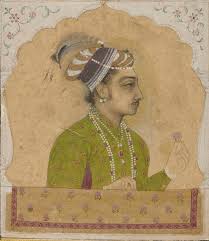Dara Shikoh
2020 MAR 12
Mains >
Art and Culture > Architecture > Archaeological sites

Why in news?
The Ministry of Culture recently set up a seven-member panel of the Archaeological Survey of India (ASI) to locate the grave of the Mughal prince Dara Shikoh (1615-59).
About Government’s recent move
- The Ministry of Culture recently set up a seven-member panel of the Archaeological Survey of India (ASI) to locate the grave of the Mughal prince Dara Shikoh (1615-59).
- He is believed to be buried somewhere in the Humayun's Tomb complex in Delhi, one of around 140 graves of the Mughal clan.
- The panel has been given three months time to complete this task.
- No one knows where exactly Dara Shikoh was buried. All that is known is that it’s a small grave in the Humayun’s Tomb complex.
- Italian traveller Niccolao Manucci gave a graphic description of the day in Travels of Manucci, as he was there as a witness to the whole thing. That is the basis of the thesis.
Dara Shikoh
- Dara Shikoh was an important figure in the history of the Mughal Empire. He is described as a “liberal Muslim” who tried to find commonalities between Hindu and Islamic traditions.
- He was the eldest son of Shah Jahan.
- His father became the king when he was 12 years old. In 1633, he married his cousin Nadira Banu and did not marry ever again.
- At a young age, he was made a military commander as every royal Mughal prince was. In 1652, he became the governor of Kabul and Multan.
- He was perhaps not as successful a military man as much as a philosopher and intellectual.
- Shah Jahan greatly favoured him over his other sons and this led to animosity between Dara and his brother Aurangzeb. Aurangzeb was a better military commander.
- After Shah Jahan became ill, the power struggle for the throne commenced between his sons. At the Battle of Samugarh in May 1658, Dara Shikoh was defeated by his brothers Aurangzeb and Murad. Aurangzeb then deposed his father and assumed power.
- Dara Shikoh retreated from Agra and then went to Kathiawar via Thatta in Sindh. He once again met Aurangzeb in battle at Deorai where he was again defeated.
- After this defeat, he went to Sindh and took refuge under an Afghan chieftain. Unfortunately for Dara, the chieftain betrayed him and handed him over to Aurangzeb’s soldiers.
- According to the Shajahannama after Aurangzeb defeated Dara Shikoh, he brought the latter to Delhi in chains. His head was cut off and sent to Agra Fort while his torso was buried in the Humayun’s Tomb complex.
- HIs legacy
- Dara believed in the existence of a single divine power who is called by different names – Brahm or Noor.
- He was an ardent follower of Sufism and a model for tolerance. He was a mystic and a poet.
- Dara Shikoh is described as “one of the greatest free thinkers of that time”. Dara Shikoh was interested to read about various religions apart from his own. He learnt from pandits and Christian priests about Hinduism and Christianity. He realised the greatness of the Upanishads and translated them, which were earlier known only to a few upper caste Hindus
- He translated into Persian the Bhagavad Gita as well as 52 Upanishads. This work is called Sirr-i-Akbar, the great mystery.
- In his book Kitab al Maknoon tried finding commonalities between the Hindu and Islamic spiritual traditions and initiated a healthy debate and a dialogue between the two faiths.
- Dara Shikoh authored many books and his most famous one is “Majma-ul-Bahrain”. It means ‘The confluence of the two seas’ and is a comparative study of Vedanta and Sufism.
- Dara Shikoh was invited to lay the foundation of the Golden Temple of Amritsar and he befriended with 7th Guru of Sikhs Guru Har Rai.
- He established a library which is still standing in Delhi and maintained by the Archaeological Survey of India. He also commissioned many paintings and architectural wonders.
- Dara Shikoh is also credited with the commissioning of several exquisite, still extant, examples of Mughal architecture – among them the tomb of his wife Nadira Begum in Lahore,the Shrine of Mian Mir also in Lahore,the Dara Shikoh Library in Delhi,the Akhun Mullah Shah Mosque in Srinagar in Kashmir and the Pari Mahal garden palace (also in Srinagar in Kashmir).
- In February 2017, the New Delhi Municipal Corporation renamed the Dalhousie Road to Dara Shikoh Roa
Antithesis to Aurangzeb
- Dara Shikoh was the total antithesis of Aurangzeb, in that he was open to different faith, warm-hearted and generous — but at the same time he was also an indifferent administrator and ineffectual in the field of battle.
- Some historians argue that if Dara Shikoh had ascended the Mughal throne instead of Aurangzeb, it could have saved thousands of lives lost in religious clashes.
- But to think of Dara Shikoh as a modern-day liberal or secular-minded person is a gross misinterpretation of pre-British India. It's true that Dara Shikoh comes across as a fascinating Mughal prince who used his enormous clout to act as a scholarly bridge between cultures, but we have to look at him as a product of the times he lived in. 21st-century politics is a distorting lens to examine a 17th-century prince.
Prelims Question
Q. Dara Shikoh comes across as a fascinating Mughal prince who used his creative efforts and leadership to act as the guiding light for a spiritual and ideological unity between Hindus and Muslims. Discuss?
